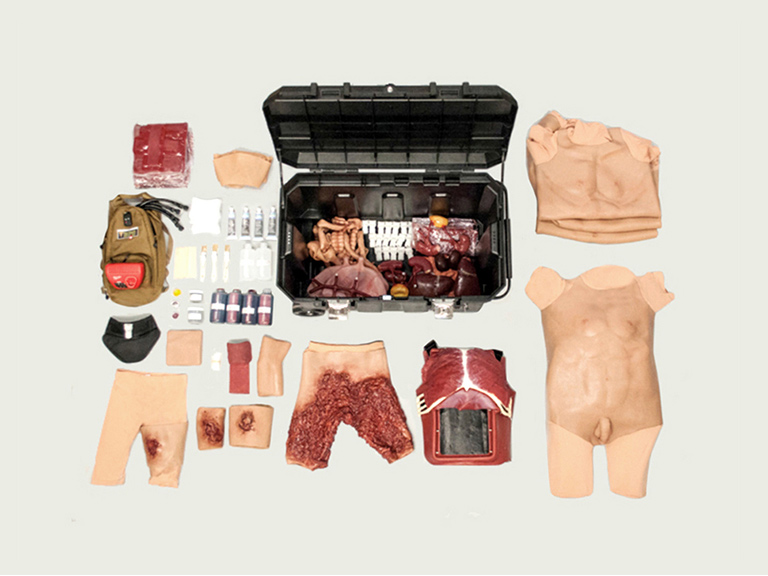Inside the bizarre world of the military-entertainment industry’s racialized gamification of war
“OUR heritage is unique,” proclaims the unruffled radio-announcer voice, as a rocket flies across the screen leaving a trail of white smoke. A bomb showers orange flames in the foreground, and panicked screams battle to be heard in the distance.
Strategic Operations is the brainchild of Stu Segall, a San Diego makeup effects artist- turned-pornographer-turned-mainstream TV and film producer-turned military contractor. He is described by friends and associates as kind-hearted, down-to-earth, fiercely patriotic, and a savvy business man.
Perusing the Strategic Operations website and reading their product descriptions is a surreal experience. Some of the products available on demand include a post-blast severed head to practice facial recognition and dental record identification, and an artificial blood concentrate kit that can be reconstituted to 5-10 gallons, depending on the desired viscosity of the simulated blood.
Strategic Operations also has the impressive capacity to provide hundreds of skilled actors to serve as civilians, opposing forces, or personnel of partner nations. For maximum realism, many of these role players have pertinent areas of expertise, including knowledge of local language and customs, military experience, weapons training, and insurgent tactics. Strategic Operations has even created a special unit, comprised entirely of bilingual Iraqi and Afghan actors with military backgrounds, to replicate special operations units of partner nations who train with the tech. Actors are supported by battlefield effects personnel and pyrotechnicians who can simulate horrific wounds and chemical, biological, radiological, nuclear, and explosives effects, all while maintaining a high standard of safety.
In addition to providing actors, Strategic Operations can create and mobilize Hyper-Realistic™ training facilities, which feature city-like textures and architectural treatments along with other atmospherics: props, elaborate set decorations, fully-outfitted residences, shops, mosques, markets, schoolrooms, etc. These high-fidelity sets are designed with changeable facades and lightweight, modular units for maximum flexibility. They can be shipped anywhere, set up in hours, and updated quickly to reflect changes in troop deployment abroad. Each additional layer of realism facilitates participants’ ability to “suspend disbelief that they are not in the real world,” becoming completely absorbed in the excitement and violence of the simulated version.
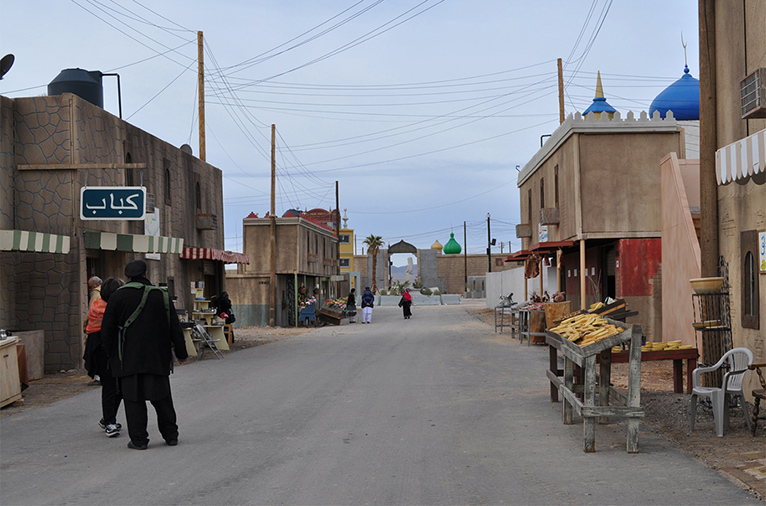
With its constant references to reality (indicated most expressively by the frequent use of the trademarked term Hyper-Realistic™), Strategic Operations sells itself on the accuracy and true-to-life details of its products. However, its confident marketing (and one might say philosophical) claims beg considered examination of other real details it has chosen to omit. A training facility on the website, for instance, shows a classroom complete with wooden tables and benches, a globe, an atlas pinned to the wall, and Arabic writing on the blackboard. Every detail of the set has been considered, yet any evidence of children ever using the space is eerily absent. Is the Hyper-Realistic™ world of Strategic Operations one in which young lives are not disrupted and destroyed by war? Is the reality of children at war--child soldiers, child accomplices and informants, child hostages, and child casualties--too real for Hyper-Real?
The decision made by the military and its contractors to omit children from its live action-style combat simulations contrasts with longstanding efforts to specifically market war to teens and young adults. Central to these marketing efforts is America’s Army, an award-winning first person shooter game franchise developed by the U.S. Army and released in 2002 for console and computer use. It has been called the pièce de résistance of the military-entertainment complex and is part of a larger rebranding campaign begun in 1999 to improve the Army’s low recruitment rates. America’s Army has since expanded to include additional games, action figures, comics, apparel, and arcade and amusement products. The game and its spinoffs have been distributed at recruiting events, college campuses, NASCAR races, state fairs, amusement parks, music festivals, and retailers, causing controversy in 2007 when a line of True Heroes action figures was released at Toys “R” Us.
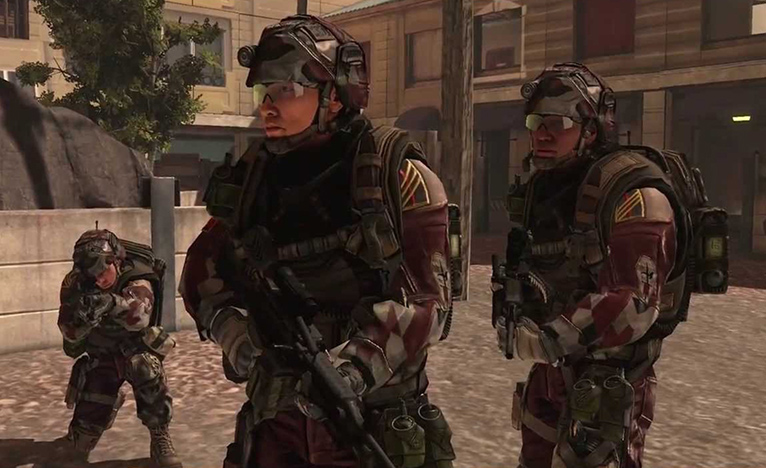
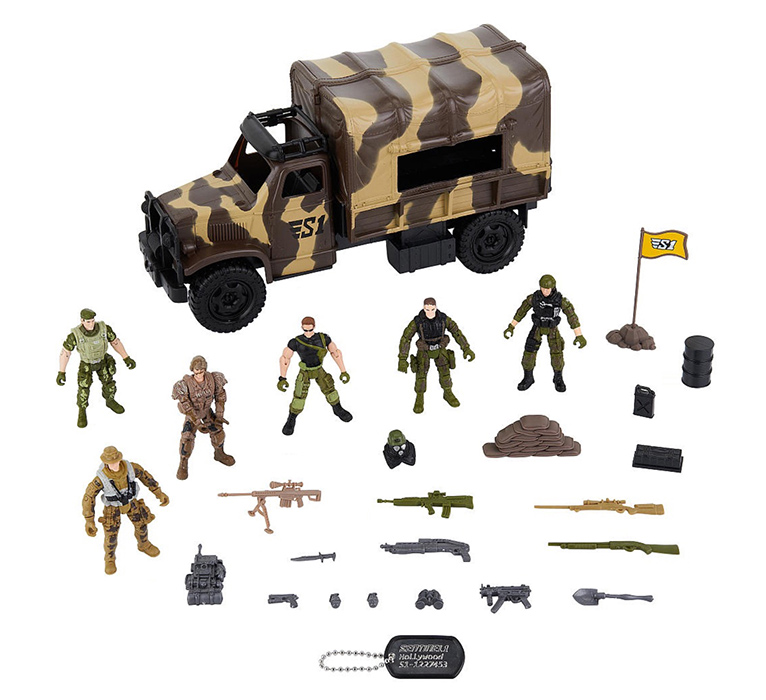
The army seeks to further mobilize the franchise by shifting away from game-by-game development, investing instead in a set of flexible video game assets (animations, environments, textures, avatars, etc.) that can be reused and stitched together with other military simulations and software. In order to accomplish this, the military partners with university research centers and private video game companies, creating a mutually beneficial and extremely lucrative new industry that some have termed the military-entertainment-education complex. The original America’s Army was developed at the Naval Postgraduate School in collaboration with Epic Games and the THX division of Lucas Films, costing taxpayers approximately $8 million, while marketing costs brought the total to around $16 million.
Apart from the protests of concerned parents’ groups, America’s Army has received criticism from both the American Civil Liberties Union (ACLU) and the U.N. for its unlawful targeting of young children. A 2008 study by the ACLU, entitled Soldiers of Misfortune focuses on the “U.S. military’s recruiting tactics that target children as young as 11 and disproportionately target low-income youth and students of color.”
The military’s focused recruitment of children of color becomes even more exploitative when we consider how many of its training tools are reflective of racial privilege and prejudice. Back in the Hyper-Realistic™ world of Strategic Operations, we can see that black and brown-colored medical training models, for instance, are conspicuously absent. While the models might be made-to-order in a variety of flesh-toned silicone, the only products on the website that feature brown skin are the “humanoid 3-D targets” capable of “withstanding approximately 3,000 rounds.” It seems our soldiers are being taught that darker-skinned bodies don’t lose limbs, explode, bleed, and need urgent medical attention the same way white bodies do. Is white skin the only skin that a military doctor or first responder should be trained to care for? A quick online image search for the existence of racially diverse medical and military training models evidences a disturbing lack of non-white bodies and skin tones.
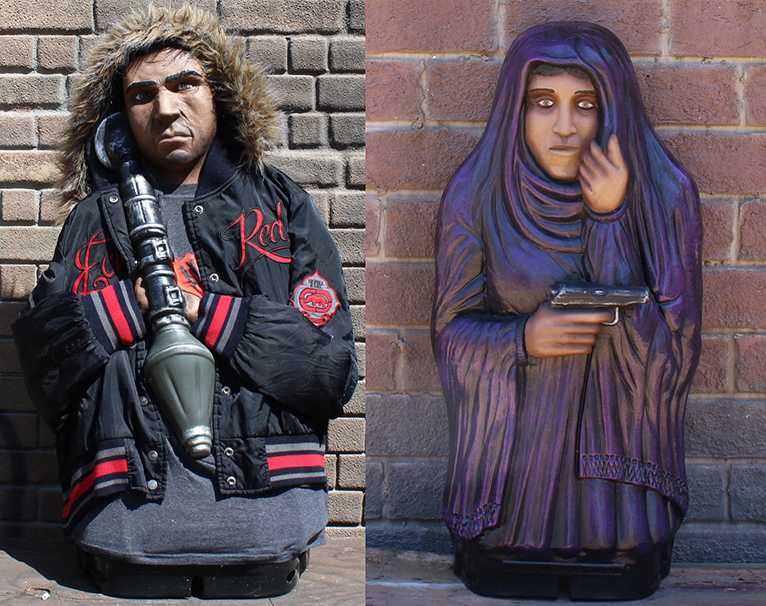
Strategically reimagining which bodies are present, which ones get hurt, and to what extent they do is nothing new as far as military-themed simulations go. Gotham Games’ Conflict: Desert Storm, for instance, reimagines the Gulf War as a battle between the largely white American-British forces and the bearded, darker-complexion Iraqi forces, while ignoring the historical involvement of militaries from Saudi Arabia, Egypt, Turkey, and Kuwait fighting for the coalition side.
Actual death, and all of its consequences, is an aspect of reality that is edited out of the Hyper-Realistic™. During an interview for the 99% Invisible podcast, Segall provides a succinct description of his business, stating, “It is real…except nobody dies, nobody bleeds out, and you can do it again.”
Popular criticism of military simulations and games usually focuses on the particular way combat is portrayed, often failing to bring up the larger issues of compartmentalization and context (or lack thereof). These simulations assume violent interactions, but often do not provide global perspective on foreign policy decisions or opportunity to avoid conflict through diplomatic intervention. While this may be a critique of military training at large, it is especially salient in regard to how children are educated and advised about military matters. In America’s Army there is no level where you play a leader deliberating over going to war, or a diplomat at a U.N. peace talk. Interactions with enemy soldiers are limited to violence, and civilians are virtually non-existent. There is no appreciation for the lives people had before the combat commenced, the struggles of life in a conflict zone, and the difficulty to carry on afterwards. There is only Hyper-Realistic™ violence happening in a vacuum.
Because violence prevails in military-themed games, there is a tendency to focus on the amount of gore in the simulation as a measure of its intensity. The more insidious aspect, however, is the presentation of a particular highly selective version of reality as very “realistic” or hyper-real. Although gaming and the military have been tied since the creation of the ancient Chinese board game Go, past games used abstractions to teach military strategy, rather than using sophisticated technology and effects to blur the lines between game and reality itself. No matter how many seductive details these simulations may include, the fact remains that they are strategic instruments--lavishly financed, precisely manufactured, and aggressively marketed in the name of capitalism, warmongering, and American imperialism. While the amount of gore may vary, the manipulative use of high-tech military games and simulations to muddle reality, train and recruit children, and desensitize soldiers is constant, meaning these simulations are never innocent, even if they are devoid of blood.
